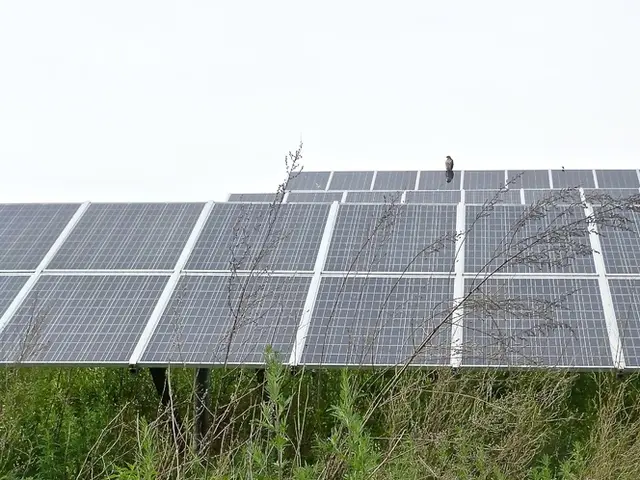Sun-Powered Devices Revolutionize Mesosphere Study
Scientists have developed a revolutionary device that can stay aloft in the Earth's atmosphere indefinitely, using only sunlight. These ultralight devices, created by a team led by Professor Jong-hyoung Kim from Pukyong National University, could revolutionize our understanding of the mesosphere, the layer of the atmosphere between 50 to 80 kilometers above sea level.
The devices, resembling wafer-thin metal 'parachutes', levitate into the air without the need for solar panels, propellers, or engines. They achieve this through a phenomenon called photophoresis, which generates air flow due to heat transfer and gas movement. In natural sunlight, the device produces an airflow that lifts it up, similar to a rocket's jet of gas.
The team, which also includes researchers from Harvard University and the University of Chicago, has designed these devices to be sturdier and capable of lifting more mass at lower altitudes. A palm-sized version can carry a 10-milligram payload in the mesosphere. This is significant because the mesosphere is too high for balloons and aircraft and too low for satellites, earning it the nickname 'ignorosphere'.
The potential applications are vast. The devices could stay aloft indefinitely during the summer months near the poles and potentially levitate for weeks to months at night. They could explore the mesosphere, study high-altitude cloud and lightning events, track meteoric dust, and record temperature fluctuations related to climate change. Moreover, they could carry tiny monitors up to the mesosphere and potentially analyze the atmosphere on Mars at low cost.
These innovative devices, developed by Professor Jong-hyoung Kim and his team, offer a promising new way to explore and study the Earth's atmosphere and beyond. Their ability to stay aloft indefinitely using only sunlight could lead to significant advancements in our understanding of the mesosphere and other celestial bodies.
Read also:
- Industrial robots in China are being installed at a faster rate than in both the United States and the European Union, as the global market for these robots faces a downturn.
- Galvanize Unveils $1.3 Billion Plan to Fund the Energy Sector's Evolution Pathway
- EAFO Research Uncovers Crucial Elements in Electric Vehicle Adoption within the EU
- Zeppelin's Fuel Cell Unit Powers 'Sandstedter Sommer' Festival








